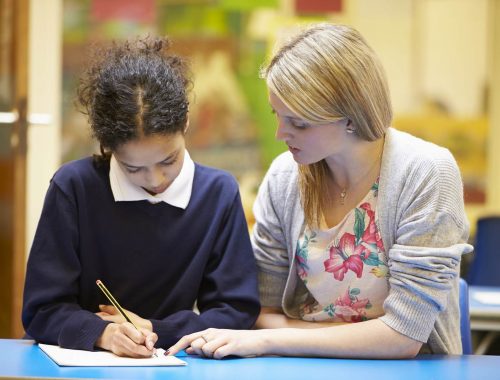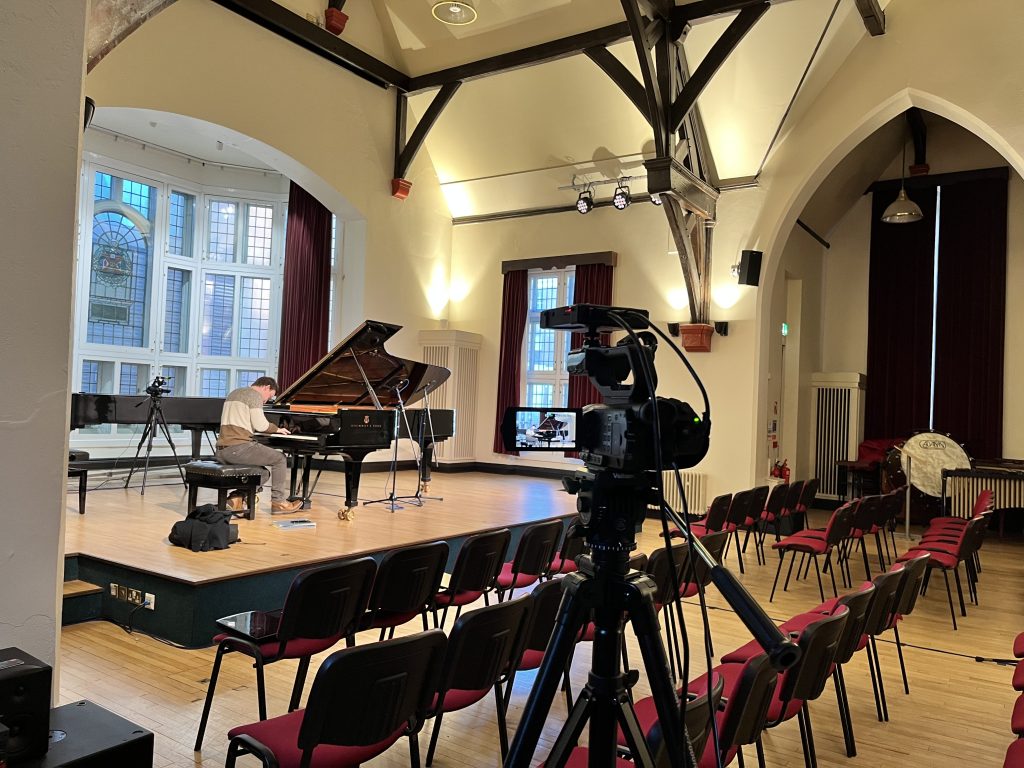From Applying to Going Live – A first semester reflection of Work Placement
Applying for my Work Placement
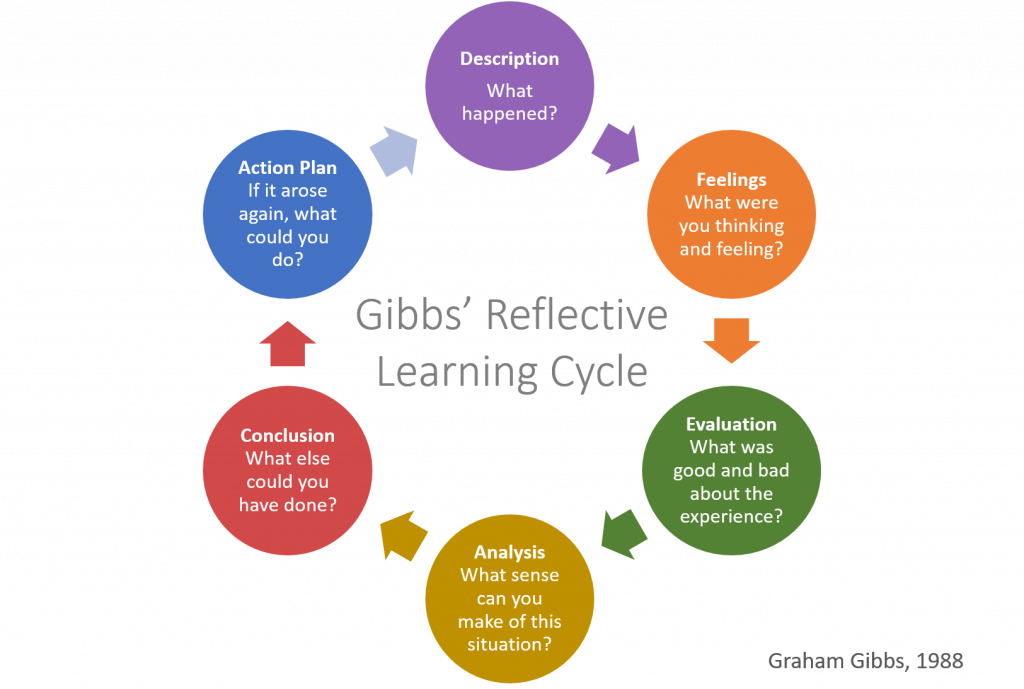
In this blog post, I plan to give account of my initial experience of work placement at the Sonic Arts Research Centre, Belfast. I plan to evaluate the processes of applying to earn my placement and the first stages of starting it. I plan to use Gibbs’ reflective cycle to create a cohesive account of the first stages of my work placement. Gibbs’ cycle was created in 1988 to give structure to learning from experiences, allowing evaluation of situations which may arise in a placement (University of Edinburgh). The main stages of the model are Description (What Happened?), Feelings (How did it make you feel?), Evaluation (What was good/bad about the experience?), and analysis (why did/didn’t things go well?) (See fg.1).
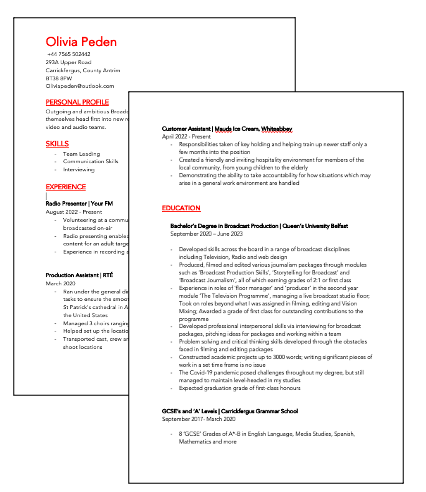
The process of applying for this placement was the first time I had written a professional CV, taking into account layout and presentation, whilst communicating why I feel suitable for the role. I took into account the fact that I am ‘Marketing’ myself (Innes, 2012). Although content is the main concern in CV Writing, good Presentation can attract the recruiter to read through my CV (Innes). I chose a neat and modern typography and stuck to a basic colour scheme of red and black in a clear bullet point format with headings to introduce a short personal profile, skills, experience and education , keeping to essential and relevant information (Cole, 2010) (See figure 2). As the position I applied for was in broadcasting, I decided to include a link to a broadcast portfolio which showcased the projects I have been working on throughout my time at Queen’s, however I also used my experience and education headings to also convey my skill set. I didn’t have to partake in an interview for my placement, so within the next two weeks I had received an email saying that my application was successful.
First Experiences
I have chosen to partake in placement as part of the media team at the Sonic arts Research Centre in Belfast, which records weekly recitals for the music department here at Queen’s University Belfast. The purpose of partaking a placement is to ‘develop a coherent approach to build workforce capability, skills and individual prospects’ (Universities Australia et. Al, 2015) and enable me to connect theory based learning in University with practice in the form of a placement. I have been able to start connecting my broadcast knowledge with practice in my work placement, especially with camera work and team work dynamics.
By my 4th week of placement, I have recorded recitals in both the Sonic arts research centre and in the Harty Room, recording artists ranging from a piano duo (Featured below) to a (quite disturbing) auditory piece about food written by sonic artist Vanissa Law. Not only have these recitals been interesting to watch, being behind the scenes and working as a producer has allowed me to have a creative approach and take initiative concerning vision mixing and camera angles. The purpose of partaking a placement is to ‘develop a coherent approach to build workforce capability, skills and individual prospects’ (Universities Australia et. Al, 2015) and enable me to connect theory based learning in University with practice in the form of a placement.
I chose the role of producer in the team as it is a role which I would like to work as upon graduating and it has enabled me to apply my leadership and producing skills learnt as part of the second year module ‘the television programme’. According to ScreenSkills, a producer is the ‘overall decision maker’ who also spots and solves potential problems throughout the production process. The producer also had the role of constantly communicating with their team in order to create a good working environment and make everything run smoothly (Screenskills).
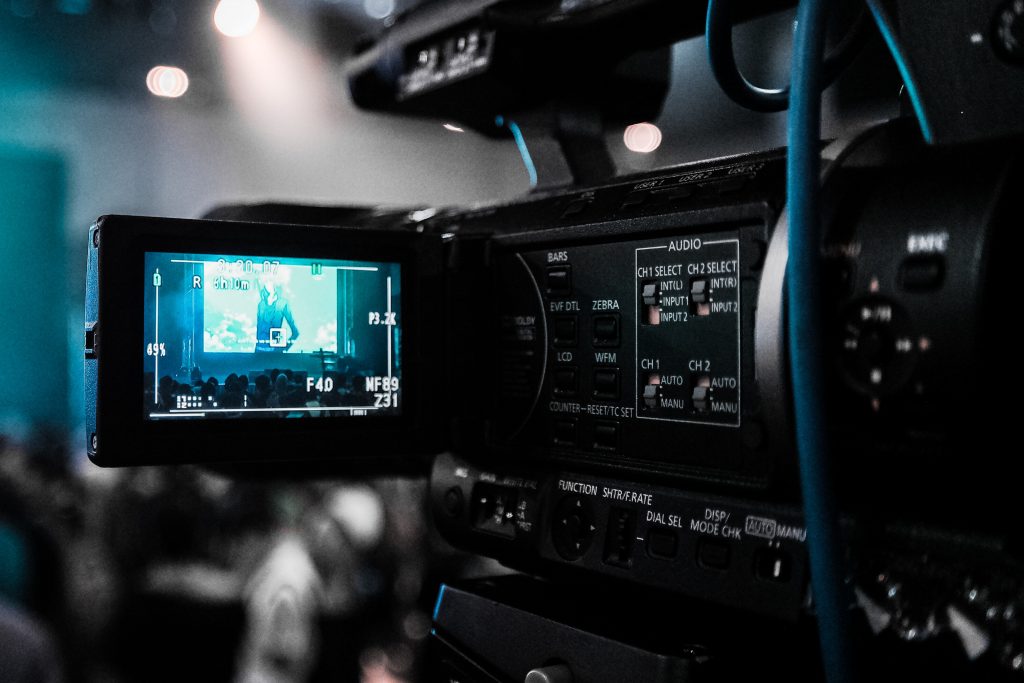
Initially, I learnt what constitutes a ‘problem’ in live visual broadcast, which includes things like technical and connection issues, time management and camera work. As we were creating a live broadcast, there was a small vision mixing studio, where you can switch visual sources to portray the action on screen (Ward, 2013) – a technician described this as ‘real time editing’ which helped me feel more comfortable with doing the task.
On the first day, I volunteered to take on vision mixing in order to get used to the task and see how I could bring creative ideas to the livestream. Due to the fast-paced nature of vision mixing, on my first day I found myself a little anxious and doubting myself, but with guidance from the team above me, I vision mixed the livestream taking into account the pace of the music and how it looked on screen. Although I found the task less challenging than I thought, I identified that I had a hard time managing the time between camera shots; I have been trying to work on this in subsequent weeks.
Although these initial experiences of applying for and starting my placement seemed daunting at first, the process of drafting and creating a professional CV has been invaluable for preparing me for the world of post-graduate work in broadcasting. My first few weeks have taught me a lot about what roles I enjoy performing in a work setting and being able to keep up with the fast pace of live broadcasting. I can’t wait to see how I can develop my skills in my placement further over the next few months!
Bibliography
Gibbs’ Reflective Cycle. University of Edinburgh, 2020. Accessed 13/11/2022 https://www.ed.ac.uk/reflection/reflectors-toolkit/reflecting-on-experience/gibbs-reflective-cycle
Innes, James. The CV Book (Second Edition) : Your definitive guide to writing the perfect CV. Pearson Publishing, 2012.
Cole, Jan. Creative CV Guide. University of the Arts London, University for the creative Arts, University College Falmouth, 2010.
Ward, Peter. TV Technical Operations: An Introduction. Taylor and Francis, 2013.
Universities Australia, BCA, ACCI, AIG & ACEN. (2015). National Strategy on Work Integrated Learning in University Education.
Producer in the film and TV drama Industries. Screenskills, 2022. Accessed 17/11/2022. https://www.screenskills.com/job-profiles/browse/film-and-tv-drama/development-film-and-tv-drama-job-profiles/producer-film-and-tv-drama/
Image of Gibbs’ Reflective Cycle. https://helendenheld.com/tag/gibbs-reflective-learning-cycle/
Stock Image of camera: https://www.pexels.com/search/broadcast/
All other images taken by me.
You May Also Like

Job Interviews: Selling Yourself For A Pay Cheque
24 February 2023
The World of Theatre upon Reflection
30 November 2022